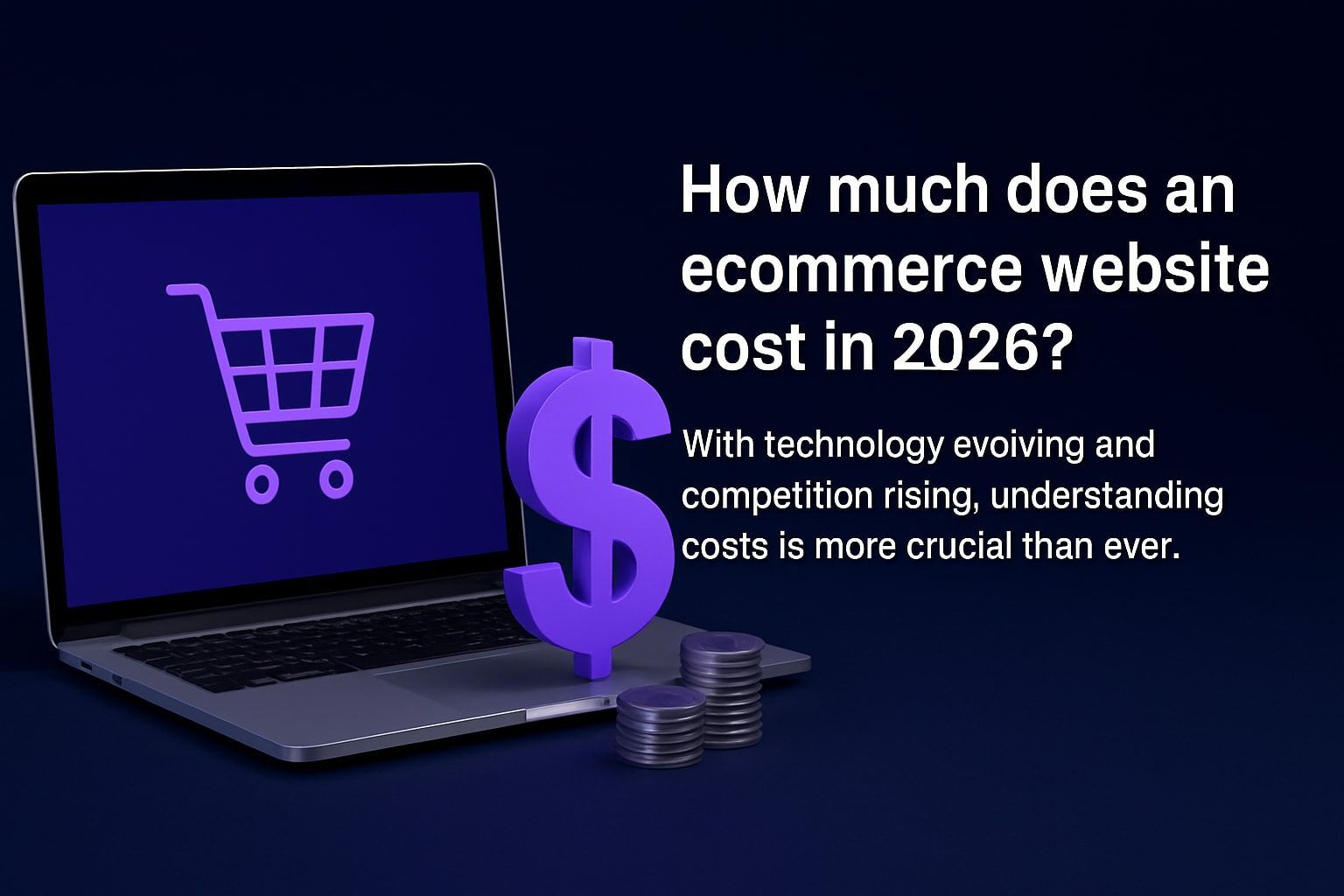10 Essential Website Elements to Boost Your Site in 2025
Web design is more competitive than ever as we head into 2025. To stand out, websites need more than just good looks—they need the right website elements to drive performance and results.
In this post, you’ll discover the 10 essential features every high-performing site needs, from intuitive navigation and compelling CTAs to lightning-fast speed, mobile optimization, and eye-catching visuals.
Ready to boost user engagement, conversions, and future-proof your online presence? Start implementing these actionable strategies and transform your website into a leader in its field.
The Foundation of a High-Performing Website in 2025
The digital landscape is evolving rapidly, and the foundation of any high-performing site now relies on a blend of strategic planning, technical excellence, and a deep understanding of user needs. As we approach 2025, foundational website elements have never been more critical in capturing attention and keeping visitors engaged.
Today’s visitors expect seamless experiences the moment they land on a site. They’re looking for fast load times, intuitive navigation, and content that addresses their unique goals. In fact, the average user spends less than a minute on a web page, so every second and every element counts. If your website elements are outdated or poorly structured, users will bounce to a competitor in seconds.
A well-organized website structure is not just about aesthetics—it’s about creating clear pathways for both users and search engines. Logical site architecture, easy-to-follow menus, and consistent layouts make it easy for visitors to find what they need. These website elements also improve SEO by ensuring that search engines can crawl and index your site efficiently. According to Web Design Best Practices 2025, aligning structure with best practices is essential for both visibility and usability.
Strategic planning is at the heart of high-performing websites. Each page should have a defined goal, whether it’s to inform, capture leads, or drive sales. Aligning website elements with business objectives ensures you’re not just attracting visitors but converting them. Clear messaging and targeted content help address different user intents, making each visit feel personalized and purposeful.
Foundational website elements directly impact critical metrics like bounce rates, dwell time, and conversions. For example, if your homepage loads slowly or lacks a clear call to action, users are likely to leave before engaging. On the other hand, streamlined navigation and relevant content can increase the time visitors spend on your site and encourage them to take action.
Consider brands that have recently revamped their sites by focusing on these foundational elements. Retailers who improved their navigation and mobile responsiveness saw significant boosts in conversion rates. SaaS companies that clarified their messaging and simplified user flows reduced bounce rates and increased signups, proving the power of a strong foundation.
Here’s a quick summary of how foundational website elements influence key performance metrics:
| Website Element | Impact on Performance Metrics |
|---|---|
| Clear Navigation | Reduces bounce rate, boosts page views |
| Fast Load Times | Increases dwell time, improves SEO |
| Targeted Content | Enhances conversions, lowers bounce |
| Responsive Design | Improves accessibility, widens reach |
Staying ahead requires more than just a one-time update. Regular audits and updates are essential for maintaining a competitive edge. User expectations, SEO algorithms, and design trends shift constantly, so reviewing your website elements ensures your site remains effective and engaging year after year.
Ultimately, the foundation you establish today will determine your website’s success in 2025 and beyond. By investing in robust website elements and ongoing improvements, you set the stage for higher engagement, better rankings, and long-term growth.

10 Essential Website Elements to Boost Your Site in 2025
Building a future-proof website means focusing on the right website elements that drive results. Let’s break down each must-have for 2025, so you can optimize your site for performance, engagement, and conversions.

1. Curated Navigation Menu
The navigation menu is one of the most critical website elements. It acts as a roadmap, guiding users to the content they seek. Intuitive navigation boosts usability and keeps visitors engaged.
Best practices for navigation include limiting menu items to avoid overwhelm, using clear and concise labels, and maintaining consistency across all pages. Consider drop-down menus for organization, mega-menus for large sites, or sticky navbars to keep options accessible as users scroll.
Visual cues like icons, background effects, or subtle shadows help highlight important links and current page states. Planning navigation with a tree-like structure ensures logical flow and easy findability.
Optimized navigation isn’t just user-friendly—it’s SEO-friendly too. It helps search engines crawl your site efficiently, improving rankings. According to recent studies, improved navigation can significantly reduce bounce rates and increase page views.
Regularly audit your navigation to ensure it matches user needs and business goals. Even small tweaks to your website elements here can yield big results.
2. Clear and Compelling Call to Action (CTA)
A strong call to action is a non-negotiable website element for driving conversions. Each page should focus on a single, clear CTA—whether it’s “Book a Demo,” “Subscribe Now,” or “Start Free Trial.”
Placement is key. Position your CTA above the fold, but don’t hesitate to repeat it at logical points down the page. The design should feature contrasting colors and a size that stands out, with actionable language that tells users exactly what to do.
Experiment with different types of CTAs: buttons, banners, forms, or pop-ups. Use A/B testing to find the most effective combination for your audience.
Button design matters, too. Make sure CTAs are visually distinct, accessible, and easily clickable on all devices.
The impact is real—a well-designed CTA can boost conversion rates by up to 80%. Continually refine this website element to maximize engagement and results.
3. Fast Loading Speed and Core Web Vitals Optimization
Loading speed is a cornerstone among website elements. Users expect pages to load instantly. If your site drags, you risk losing visitors—53% of mobile users will abandon a site that takes longer than three seconds to load.
Google’s Core Web Vitals are now a direct ranking factor. Focus on optimizing Largest Contentful Paint (LCP), First Input Delay (FID), and Cumulative Layout Shift (CLS).
Techniques like image compression, code minification, lazy loading, and using a CDN can dramatically improve speed. Use tools such as Google PageSpeed Insights to measure and track progress.
Speed affects not only user satisfaction but also SEO and conversion rates. Real-world examples show that improving this website element leads to measurable business growth.
Continuously monitor and refine your site’s performance. Fast-loading website elements keep users engaged and coming back for more.
4. Mobile-First and Responsive Design
Mobile-first design is no longer optional—over 60% of web traffic originates from mobile devices. Responsive website elements ensure your content adapts seamlessly to any screen size.
Utilize flexible grids, scalable images, and touch-friendly navigation. Responsive frameworks like Bootstrap or Tailwind can streamline the process.
Test your site on multiple devices and browsers to catch any issues. Google’s mobile-first indexing means your site’s mobile version is the primary version for ranking.
Brands excelling in mobile optimization see higher engagement and lower bounce rates. The future of website elements will include voice search, AR features, and gesture-based navigation.
Prioritize accessibility and usability on mobile to stay ahead in 2025.
5. Scannable and Readable Typography
Typography is a surprisingly influential website element. Clear, concise text with strong visual hierarchy keeps readers engaged.
Use headings and subheadings to break up content. Choose fonts with proper size, spacing, and contrast for readability. Structure text with highlights, bold, italics, and lists to guide the eye.
Balance visual appeal with accessibility standards. Tools like Hemingway and Readable can help assess your content’s clarity and grade level.
Sites that focus on readable website elements enjoy increased average session durations—up to 20% longer. Consider how typography impacts your message and user experience.
Keep paragraphs short and scannable. Well-crafted website elements in your copy can make all the difference.
6. Purposeful Visuals and Multimedia
Visuals are powerful website elements for storytelling and engagement. High-quality images, videos, and graphics capture attention and convey your brand’s message.
Use original visuals whenever possible for authenticity. If using stock images, ensure they align with your brand. Always add ALT text for SEO and accessibility.
Hero images, explainer videos, and infographics can make complex topics digestible. Optimize all visuals for fast loading without sacrificing quality.
Inclusion matters—choose images that reflect diverse audiences. Pages with relevant visuals get 94% more views than those without.
Purposeful use of website elements like multimedia will set your site apart in 2025.
7. Trust Signals and Social Proof
Trust signals are vital website elements that establish credibility. Display testimonials, reviews, certifications, and awards prominently.
Strategically place trust badges, such as SSL certificates or payment security logos, near conversion points. Include client logos, case studies, and user-generated content to reinforce authority.
Social proof significantly impacts conversion rates—88% of consumers trust online reviews as much as personal recommendations.
Authenticity is key. Keep your trust signals current and relevant for maximum impact.
For e-commerce or service sites, explore more Ecommerce website essentials to further boost trust and performance.
8. Optimized Forms and Lead Capture Elements
Forms are often the gateway to conversions, making them critical website elements. Simplicity is key: minimize required fields, use clear labels, and offer instant feedback for errors.
Place forms where they’re most effective—whether as pop-ups, embedded sections, or dedicated landing pages. Integrate with your email marketing or CRM to streamline lead collection.
Lead magnets like eBooks, checklists, or exclusive discounts can incentivize signups. Reducing form fields from 11 to 4 can increase conversions by 120%.
Mobile optimization is essential. Test forms on various devices to ensure a smooth experience.
Refine these website elements regularly to capture more leads and nurture your audience.
9. Robust SEO Foundations and Structured Data
SEO is the backbone of discoverable website elements. Focus on on-page SEO basics: meta titles, descriptions, headings, and targeted keywords.
Leverage AI-powered SEO tools for automation and insights. Structured data (schema markup) helps search engines understand your content, increasing the chance for rich results.
Create and submit XML sitemaps and robots.txt files for better crawlability. Use internal links to guide users and search bots.
Monitor performance with analytics and search console tools. Sites using schema markup can see up to 30% higher click-through rates.
For a deeper dive, check out Website SEO best practices to ensure your website elements are fully optimized for search.
10. Accessible and Inclusive Design
Accessibility is a non-negotiable website element in 2025. Design with all users in mind, including those with disabilities.
Follow the latest WCAG 2.2 guidelines and legal requirements. Features like keyboard navigation, alt text, ARIA labels, and high color contrast are essential.
Ensure forms, media, and navigation are accessible. Use tools like WAVE or Lighthouse for audits and continuous improvement.
Brands recognized for accessibility reach wider audiences and enjoy better SEO. With 15% of the world’s population living with a disability, inclusive website elements are both a moral and business imperative.
Prioritize accessibility to future-proof your site and build a positive brand reputation.
Future-Proofing Your Website: Trends and Innovations for 2025
The digital landscape is evolving faster than ever, and staying ahead means embracing the latest website elements and trends. As 2025 approaches, future-proofing your online presence is no longer optional—it's essential for maintaining a competitive edge.

AI and Automation: The New Web Design Backbone
AI-powered solutions are redefining how website elements are created and optimized. From automated content generation to layout suggestions, these tools streamline workflows and cut down on manual tasks. Platforms like the AI assistant for web design allow designers to rapidly prototype, test, and personalize user experiences with unprecedented efficiency.
With AI, website elements can adapt in real time to user behavior, ensuring seamless navigation and more relevant content. Automation also extends to SEO, accessibility checks, and even security updates, helping maintain high standards with minimal effort.
Personalization: Tailoring Every Click
Personalized web experiences are now expected by users. Modern website elements leverage data analytics to deliver content, product recommendations, and calls to action based on individual preferences and browsing history.
Dynamic landing pages, geo-targeted offers, and adaptive messaging all help increase engagement and conversion rates. The more your site feels tailored, the more likely visitors are to return and interact.
Conversational Interfaces and Voice Search
Voice search and chatbots are becoming integral website elements as users demand faster, more natural interactions.
Optimizing your site for voice queries means rethinking keyword strategies and structuring content for question-based searches.
Conversational UIs—like on-page chat assistants—offer instant support, guide users, and collect valuable feedback. These interfaces not only enhance accessibility but also improve the overall user experience.
Immersive AR/VR Experiences
Augmented and virtual reality are transforming how brands showcase products and tell stories online. By integrating AR/VR as interactive website elements, you can let users try products virtually or explore immersive brand environments.
Retailers are using AR for virtual fitting rooms, while real estate sites offer VR tours of properties. These innovations drive deeper engagement and set your site apart in a crowded digital space.
Privacy, Security, and Compliance
With more data comes greater responsibility. Website elements must now prioritize privacy and security, especially as regulations like GDPR and CCPA evolve. Features such as cookie consent banners, robust SSL encryption, and transparent data policies are essential.
Regular audits help ensure compliance and build trust with users. Failing to address these concerns can result in lost business and legal penalties.
Sustainable and Eco-Friendly Web Practices
Sustainability is influencing web design. Lightweight website elements, efficient coding, and green hosting reduce your site's carbon footprint. Many brands now highlight their eco-initiatives directly on their sites, appealing to environmentally conscious consumers.
Actionable Steps to Stay Ahead
To future-proof your site, consider these steps:
- Regularly audit and update website elements for speed, accessibility, and compliance
- Implement AI-driven tools for design and personalization
- Optimize for voice search and conversational interactions
- Explore AR/VR features that fit your brand
- Prioritize user privacy and eco-friendly practices
Brands that embrace these innovations are seeing measurable improvements in engagement and ROI. For more insights on the impact of these trends, explore
Web Design Insights and Trends 2025. The future belongs to those who evolve—make sure your website elements are ready for what’s next.
Ready to put these 10 essential website elements into action and give your site a real edge in 2025? With Avantiy’s AI-powered platform, you don’t need to be a coding expert to create stunning, high-performing websites that load fast, look amazing on any device, and rank well on search engines. Whether you’re building a portfolio, blog, or online store, you’ll find intuitive tools, customizable templates, and smart design assistance waiting for you. Why wait to future-proof your online presence?
Start Building Your Website Today and see how effortless professional web design can be.
Start building your new website today
No credit of debit card required start building today




